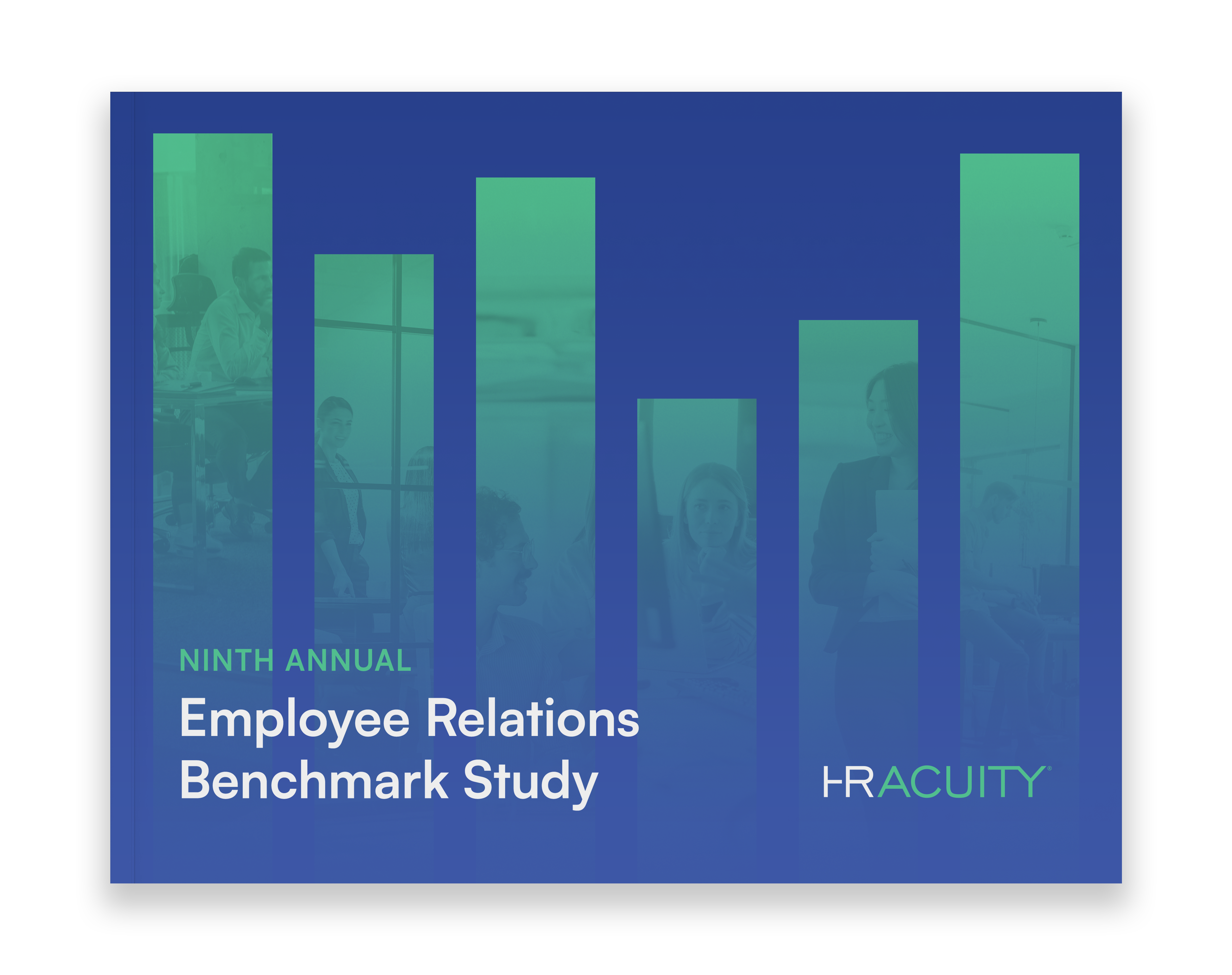Let’s be honest — you can’t improve what you don’t measure. And you definitely can’t measure in a vacuum.
That’s where HR benchmarking comes in. Wondering how your organization stacks up against others in your industry or of similar size? Benchmarking gives you the context you need to evaluate performance, spot gaps and drive smarter strategy — all while building a workplace people actually want to be part of. For example, benchmarking reveals that just over half of companies track their overall substantiation rate — and that insight can give you a push to be among them.
In this guide, we’ll break down everything you need to know about human resources benchmarking: Why it matters, how to do it and what it looks like in action. Let’s dive in.
What is HR Benchmarking?
HR benchmarking is the process of comparing your organization’s HR metrics, practices and outcomes to industry standards or peer organizations.
Done right, it gives you a clear read on where you stand — and where you need to improve. It’s how leading HR teams justify resources and headcount, shape strategy and measure real progress over time.
Common benchmarks include time-to-hire, turnover rates, employee relations case volumes and HR-to-employee ratios. These data points provide essential context that can elevate decision-making and drive performance.
Gone wrong? It’s just noise. (We’ll get into that, too.) But when done well, benchmarking is one of the most powerful tools in your HR playbook.
If you’re wondering, “How am I going to get access to benchmark data?” We have great news. You can tap into HR Acuity’s Ninthan Annual Employee Relations Benchmark Study — with insights from more than 280 of the world’s largest organizations, representing 8.7 million employees globally. Or, use the HR Acuity platform itself, where benchmarking is built right into the app. (Better yet? Use both.)

How Has HR Benchmarking Evolved Over Time?
Let’s just say it’s come a long way.
HR benchmarking used to be a slow, manual process — think static spreadsheets, outdated industry reports and hours spent digging through disconnected data. Teams relied on lagging indicators and often made decisions without a full picture.
Today, it’s a different story. Thanks to AI and real-time analytics, benchmarking is smarter, faster and way more strategic. Platforms like HR Acuity automatically pull in internal and external data, surface key trends and even flag risks before they escalate — all without the manual headache.
And the scope? It’s expanded, too. Teams aren’t just tracking headcount ratios anymore. They’re benchmarking time-to-resolution, employee sentiment, risk levels and more — all in one place, in real time. That’s how modern HR moves from reactive to proactive.
What are the Types of Human Resources Benchmarking?
Benchmarking isn’t one-size-fits-all — it depends on what you’re trying to measure or improve. The two core types are internal and external benchmarking, and each brings something different to the table.
Internal Benchmarking
This type compares data within your organization — across departments, regions or time periods. It helps spot what’s working (and what’s not) so you can share best practices and close performance gaps. Internal benchmarking is also key for tracking progress and ensuring consistency as your business evolves.
Internal benchmarking is especially helpful if you:
- Operate multiple company campuses or locations
- Manage a large or complex organizational structure
- Want to track performance improvements over time
- Need to align HR processes and standards across departments or regions (Hint: Everyone should!)
External Benchmarking
External benchmarking adds critical context by comparing your HR metrics to those of similar organizations — by size, industry or region. It helps you see where you stand, spot industry trends early and set performance targets that are ambitious and achievable.
Traditionally, this meant relying on third-party surveys or static reports. But today, advanced platforms like HR Acuity offer built-in benchmarking tools that deliver real-time insights.
External benchmarking is especially helpful when you want to:
- Understand how your HR team performs relative to similar organizations
- Spot industry-wide trends and emerging risks early
- Set data-backed, realistic performance goals
- Build a business case for investment or headcount
- Identify areas where you need more resources (or where you can cut back)
Which Type of Benchmarking is Better?
Here’s the truth: Neither internal nor external benchmarking is “better.” They each serve a unique role — and you need both to get the full picture.
Internal benchmarking uncovers patterns, gaps and wins within your organization. External benchmarking puts those results in context, showing how you stack up against the broader industry.
Used together, they empower smarter, data-driven decisions that are tailored to your company yet grounded in real-world standards. Rely on just one, and you’re missing half the story.
By using both types in parallel, you can:
- Measure performance fairly and consistently
- Prioritize improvement efforts with confidence
- Align your HR strategy with business goals and market standards

What are the Benefits of HR Benchmarking?
We like to think of HR benchmarking as the missing ‘X’ in your HR equation. Without it, you might still arrive at an answer — but it’s likely based on assumptions, not evidence. Add benchmarking to the mix, and you gain the clarity and context needed to solve for what really matters.
Just like a math equation becomes clearer when all the variables are known, your HR strategy becomes stronger when you can compare performance against internal trends and external standards.
Some of the most important benefits of human resources benchmarking include:
HR Benchmarking Helps Make the Case for Additional Resources
Does a company your size and in your industry have twice as many HR Business Partners as you? That’s the kind of stat that gets your C-suite to pay attention.
Benchmarking shows exactly where your HR team is stretched thin or falling behind — and gives you the hard data to back it up. Whether you’re asking for more budget, headcount or tech, these insights help you build a case execs can’t ignore. When you’ve got the numbers to back you up, it’s a lot easier to get a “yes.”
HR Benchmarking Helps Provide Context
Did you see a rise in harassment, discrimination or retaliation claims in 2024? You’re not alone — so did everyone, according to HR Acuity’s Ninth Annual Employee Benchmark Study.
Without internal or external comparisons, it’s nearly impossible to know if your HR team is ahead of the curve or falling behind. Benchmarking provides that crucial context. It shows you what “good” looks like for your industry or company size, keeps you focused on meaningful metrics (not vanity ones), and helps you spot whether trends in your org reflect broader patterns across the field.
HR Benchmarking Provides Leadership with Clear, Concise Overviews
Let’s be honest: Most C-suite leaders don’t have time to read a 10-page breakdown of your HR strategy. Benchmarking turns complex data into clear, actionable insights they will pay attention to. When you present trends, risks and opportunities with solid benchmark data behind them, you build credibility — and make it easier to align HR priorities with broader business goals.
HR Benchmarking Helps Prioritize Initiatives
As much as we wish we could do it all, HR teams have limited time and resources. That’s why it’s critical to focus on what will drive the most impact. Benchmarking helps you do just that: It surfaces where your performance falls behind peers or internal standards and highlights exactly where to prioritize. That means less guesswork and better results.
HR Benchmarking Helps Measure Progress and Teams Accountable
Benchmarking sets clear goals based on industry norms or your own data. Tracking these over time shows real progress — or flags where you need to step up. That transparency builds accountability, sparks improvement and helps teams know exactly what success looks like and how to get there.
HR Benchmarking Helps Reduce Risk
By spotting emerging trends and problem areas early, benchmarking helps you nip risks in the bud. Whether it’s rising turnover, compliance gaps or employee relations issues, data-backed insights let you act proactively — not reactively. This protects your organization’s reputation and fosters a safer, more compliant workplace.
HR Benchmark Examples
Benchmarking isn’t just numbers — it’s the context that shows if you’re leading or lagging. Here are key human resources benchmarking categories with real metrics you should be tracking.
Engagement Benchmarks
Measure employee engagement levels through metrics like survey participation rates, employee sentiment scores and feedback response times. These benchmarks help you understand how connected and motivated your workforce is compared to peers.
HR Benchmarking Examples:
- Survey Participation: 40% response rate vs. 70% industry average? That’s a red flag.
- Sentiment Trends: Trust in leadership dropping? Peers are climbing.
- Feedback Response Time: Waiting 90 days to act on employee input? Top companies move in 30.
Retention Benchmarks
Track turnover rates, voluntary vs. involuntary separations and average tenure to benchmark your ability to retain talent. Monitoring these KPIs helps identify retention risks and informs strategies to improve employee loyalty.
HR Benchmarking Examples:
- Voluntary Turnover: 18% quit rate in a 12% market? Something’s up.
- Average Tenure: 1.8 years vs. 3.5 years? Time to act.
- Exit Interview Trends: Development concerns showing up more than peers? That’s your sign to invest in growth.
Cost Benchmarks
Analyze HR-related costs such as cost-per-hire, cost-per-employee relations case and total HR spend as a percentage of payroll. Benchmarking these figures enables you to manage budgets efficiently and identify cost-saving opportunities.
HR Benchmarking Examples:
- Cost-per-Hire: $5K vs. $3.2K market average? Hiring efficiency needs work.
- Cost-per-ER Case: $900 per case vs. $500? You may be over-relying on legal.
- HR Spend as % of Payroll: 2.5% when others run lean at 1.8%? There’s room to optimize.
Compensation Benchmarks
Review salary ranges, pay equity ratios and benefits participation to ensure your compensation packages remain competitive and fair. These benchmarks support attracting and retaining top talent.
HR Benchmarking Examples:
- Market Positioning: Mid-level roles 15% below average? Expect recruiting struggles.
- Benefits Participation: 60% using wellness benefits vs. 85% elsewhere? Check your comms or offerings.
- Pay Disparities: Are new hires outearning tenured staff? That hurts morale — and retention.
DE&I Benchmarks
Assess diversity representation across levels, pay equity gaps and inclusion survey results to benchmark your progress on diversity, equity and inclusion goals. Tracking these metrics helps ensure your workplace is fair and inclusive.
HR Benchmarking Examples:
- Representation Trends: Manager-level diversity flatlining while peers are making gains?
- Pay Equity Checks: Are roles with the same scope paid the same — and can you prove it?
- Inclusion Scores: Are underrepresented groups scoring 10+ points lower on belonging? That’s a signal.
For more detailed guidance on calculating these and other important KPIs, check out HR Acuity’s 16 Metrics for a Successful Employee Relations Strategy.

See How You Stack Up: Key Findings from HR Acuity’s Ninth Annual Benchmark Study
How does your employee relations function measure up? HR Acuity’s Ninth Annual Benchmark Study, based on data from 284 organizations representing 8.7 million employees, reveals how leading organizations are tracking and managing employee issues — and where gaps still exist. Use these findings to benchmark your own practices and identify where you may be ahead or falling behind.
- 44% of organizations still haven’t adopted AI for employee relations — but teams with structured investigation processes are two times more likely to use AI.
- Cases now average 1.4 distinct issues, yet 68% of organizations don’t track issues-per-case. If you’re only logging cases at a surface level, you may be missing key trends that impact resolution strategies.
- Half of organizations don’t track core ER metrics. Benchmark your own tracking: Are you monitoring investigation timeliness, outcome consistency or issue type breakdowns?
- While 89% say investigators follow required practices, just 58% have a formal investigation process in place. Without a consistent framework, it’s harder to ensure fairness, defensibility and compliance.
- Misconduct and retaliation claims are at an all-time high — yet many teams lack the structured data to identify root causes and forecast risk. Are you capturing enough information to stay ahead?
These data points aren’t just statistics — they’re industry benchmarks you can use to assess and elevate your ER strategy.
Download the full Benchmark Study for detailed comparisons by company size, industry and maturity level.
How to Develop HR Benchmarks
You get it — HR benchmarking matters. But how do you actually put it into practice? In a perfect world, you don’t have to lift a finger — your HR case management platform does the heavy lifting for you (like HR Acuity). But if you want to go old school, here’s how to start benchmarking the manual way.
1. Set Goals and Objectives
Step one: Get clear on what you want to achieve. Whether it’s boosting retention, speeding up case resolution or advancing DE&I goals, setting specific targets gives your benchmarking purpose.
2. Determine Which Metrics to Benchmark
Next, choose the KPIs that best track your progress. Think turnover rates, case volumes, time-to-close and engagement scores.
With HR Acuity’s customizable dashboards and built-in metric libraries, it’s simple to pick and monitor the benchmarks that matter most to your organization.
3. Collect Data
You have options: manually gather data from multiple sources — which can be slow and error-prone — or let HR Acuity automate the process. Our platform captures case, investigation and HR activity data in real time, centralizing it securely and ensuring accuracy. Automation means faster, cleaner data and fresher insights to power your benchmarking.
4. Analyze Data
Once you have the data, it’s time to spot trends, gaps and opportunities. HR Acuity’s AI-powered analytics reveal patterns and highlight key insights, showing where your HR team shines—and where it can improve. With clear, visual reports, sharing findings and driving data-backed decisions is a breeze.
5. Determine Short- and Long-Term Next Steps
Use your analysis to create realistic, prioritized action plans. HR Acuity lets you track progress against benchmarks continuously and adjust strategies as needed. This ongoing cycle of improvement keeps your HR team agile and focused on driving real business impact.
Benchmarking Limitations and Mistakes to Avoid
Benchmarking is a powerful tool — but only if you avoid common traps that can derail your efforts:
- Bad Data, Bad Decisions: Using outdated or incomplete data leads to misleading results and poor choices. That’s why using a case management platform that automatically pulls in your data is so helpful — you don’t have to worry that any information was copied over incorrectly.
- Apples vs. Oranges: Don’t compare your org to benchmarks that don’t fit your industry, size or business model — it skews the picture. Misaligned comparisons can create unrealistic expectations.
- Only Looking Back: Focusing just on lagging metrics like turnover misses the chance to act on early warning signs. Remember: Benchmarking can help you act proactively.
- Ignoring Your Context: Benchmarks add context but don’t replace knowing your unique culture, market and strategy. Organizational context is just as imperative as
Avoid these mistakes and your benchmarking will be a true asset — not a distraction.
Discover Industry Benchmarks and Set Your Own with HR Acuity
Understanding where you stand starts with knowing the industry benchmarks — but real progress happens when you set benchmarks tailored to your organization’s unique goals and challenges. HR Acuity empowers you to do both.
With our platform, you can explore comprehensive, up-to-date industry benchmarks that provide essential context for your HR metrics. At the same time, you can create custom benchmarks based on your internal data to track progress that matters most to your business.
This dual approach gives you the clarity and confidence to make smarter decisions, justify resources and drive meaningful change. Ready to elevate your HR strategy? Start benchmarking with HR Acuity today — schedule a curiosity tour today.




